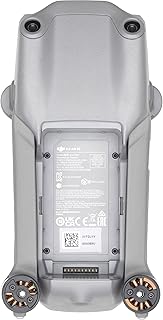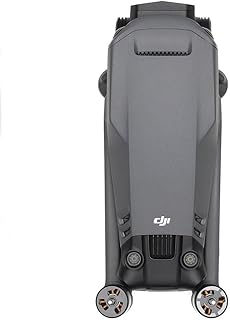RotorLogic Drone: A Comprehensive Guide
While "RotorLogic" doesn't directly refer to a specific drone brand, it's likely you're referring to the concept of drone logic, which is the software that controls the drone's flight and operations. This guide will dive into the different aspects of drone logic, offering a comprehensive understanding of its functionalities and implications.
1. Understanding Drone Logic:
* Core Function: Drone logic is the brain behind the drone's actions. It's responsible for interpreting user inputs, processing sensor data, and executing flight commands.
* Components: Drone logic encompasses:
* Flight Control System (FCS): This manages the drone's stabilization, orientation, and movement in 3D space.
* Navigation System: It uses GPS, IMU (Inertial Measurement Unit), and other sensors to determine the drone's position and track its flight path.
* Mission Planning: This allows users to pre-program complex flight paths, automate actions, and manage data collection.
* Payload Management: This component controls the drone's payload (camera, sensors, etc.), enabling data acquisition and processing.
* Communication System: It facilitates communication between the drone and the user, providing real-time data and control over the flight.
2. Key Features of Drone Logic:
* Autonomy: Drone logic allows for autonomous flight, enabling the drone to perform tasks without constant human intervention.
* Safety Features: It incorporates safety mechanisms like geofencing, altitude limits, and emergency landing procedures.
* Advanced Functionality: Features like obstacle avoidance, return-to-home, and waypoint navigation enhance the drone's capabilities.
* Data Processing: Drone logic plays a crucial role in collecting, processing, and transmitting data acquired by sensors and cameras.
3. Applications of Drone Logic:
* Aerial Photography & Videography: Drones equipped with advanced logic systems capture stunning aerial footage for various purposes like filmmaking, real estate, and tourism.
* Inspection & Monitoring: Drone logic enables automated inspections of infrastructure, pipelines, and other assets, enhancing safety and efficiency.
* Agriculture: Drones can be used for crop monitoring, precision spraying, and data collection for improved agricultural practices.
* Delivery & Logistics: Drone logic facilitates efficient and timely delivery of goods, especially in remote or congested areas.
* Search & Rescue: Drones equipped with advanced logic and sensors assist in search and rescue operations by covering vast areas quickly.
* Law Enforcement & Security: Drone logic enhances security measures and helps in crime prevention and investigation.
4. Future Trends in Drone Logic:
* Artificial Intelligence (AI): AI integration will enhance drone autonomy, enabling them to learn from experience and adapt to dynamic environments.
* Advanced Sensors: Drones will utilize more sophisticated sensors like LiDAR and hyperspectral cameras to collect and analyze complex data.
* Cloud Computing: Drones will leverage cloud computing for real-time data processing, analysis, and storage.
* Integration with other technologies: Drones will be integrated with other technologies like blockchain and 5G for improved security, communication, and data management.
5. Conclusion:
Drone logic is the backbone of modern drone technology. Its constant development and integration with advanced features will continue to expand the capabilities and applications of drones in various industries. Understanding the principles and functionalities of drone logic is essential for anyone interested in utilizing these powerful tools for diverse purposes.
Note: While this guide provides a comprehensive overview of drone logic, specific details can vary depending on the individual drone model and manufacturer. It's important to consult the official documentation for your particular drone for detailed information on its software and functionality.


